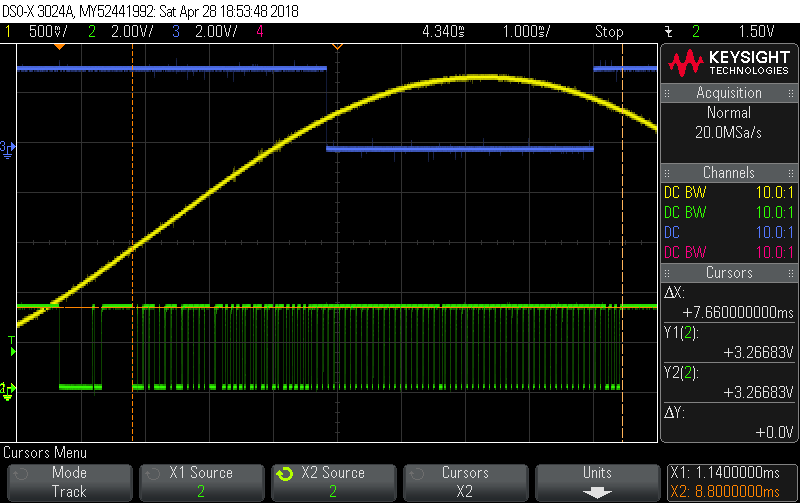I had a chance to have a play with it, and I’ve got to say it’s an extremely solid way of doing OneWire. The trace below is basically the same as the last one, but with OneWire added, so 3V+15I each being sampled at 8,376 samples/sec. The Yellow and Blue traces are the same as in the picture a couple posts back, with Blue indicating “power maths load”… currently running at about 35% at those sampling rates. Blue low means we’re inside the ADC/DMA ISR grinding our way through 1500 V,I pairs and Blue high means we’re in the main loop looking for other stuff to do.
The new Green trace below is the OneWire bus with a single DS18B20 connected to it. You can see it takes about 7.66 msecs to read the 9 byte scratch pad. Right bang in the middle of that, the ADC/DMA ISR fires and we go off to grind through all the maths (Blue goes low), but it makes no difference to the OneWire transactions which continue on autonomously. Soon after we return from the ADC/DMA ISR, the DS18B20 data is available for processing, with good checksums regardless of CPU load.
Probably true, although for some topologies two buses might be an advantage. At any rate, with the UART-offload techniques there is effectively no overhead to having a second OneWire bus. The overhead is all per-DS18B20 whether they’re all on one bus, or spread across two. So I guess it can be left to the system designer as to how many OneWire buses they want to support.
